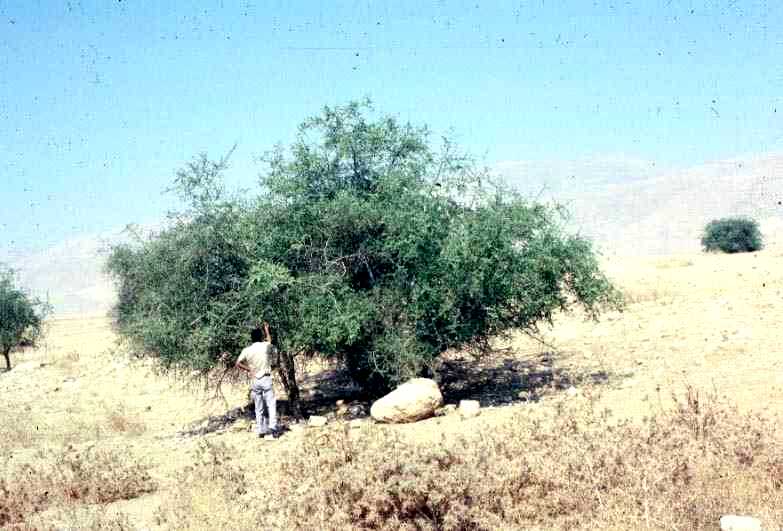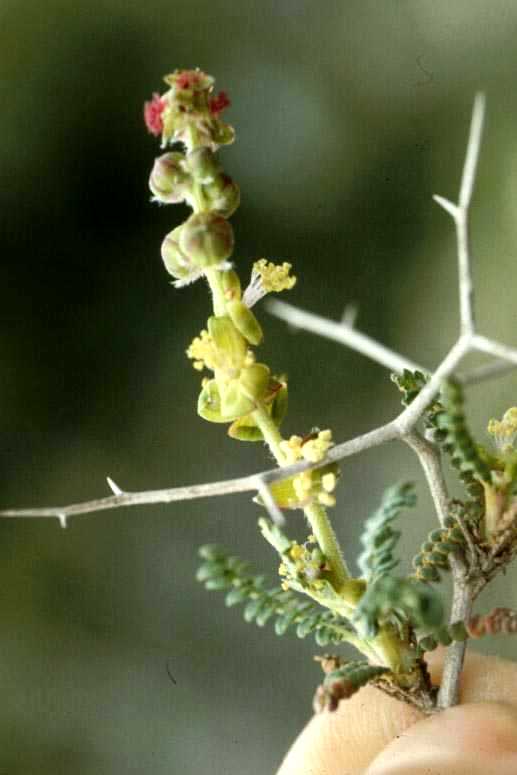|
To appreciate this highly revered honey, one has to understand the story
behind its tree.
The Sidr tree, (also
known as Lote tree, Christ's Thorn, Jujube or Nabkh tree. Botanical name: Ziziphus spina-christi) is an ancient
tree. The Jujube fruit was the first thing Prophet Adam (pbuh) ate when he was made to descend to earth. The tree
was used during the time of King Suleiman (pbuh) and the Pharaohs to build palaces and temples.
This highly resilient tree
is also sacred as it is mentioned four times in the Qur'an. In Sura Saba, it is mentioned as an
earth tree while in other Suras, it is mentioned as a paradise tree (Sidrat al-Muntaha). Allah has mentioned this tree to emphasize its beauty, strength and grandeur (Saba 15,16; Waqia 27-33; Najm 7-18).
It is a sturdy and deep-rooted
tree which has withstood the devastating floods of Eram at Ma'arib with two other trees: the Tamarisk and the Mustard
Tree. (Saba 15,16).
All of its parts have medicinal values. Its
leaves are used as a herbal shampoo, to treat dandruff, head lice, swollen eyes, abscesses, furuncles and counter obesity.
Mixed with warm water the leaves are used to clean the body since they are a disinfectant and the oil from the resin is deodorant.
Its wood ash is used for the treatment of snakebites. Its fruits are found to have a very high energy value. Its seeds are
rich in protein; its leaves rich in calcium, iron and magnesium. The root, stem bark are also used in various medicinal preparations.
Other known medicinal uses include as a stomachic, an appetizer, an astringent and also as a cough medicine.

Not many are aware that different honeys
differ. They differ in their composition, they differ in their nutritional values and they differ in their therapeutic
properties.
Research done on different honeys confirmed that floral
source, climate when the honey is being harvested and soil composition
are all key factors in determining not only its flavor, colour or aroma but also its quality and effectiveness for medicinal
or health-promoting purposes.
Another important factor affecting a honey's curative qualities
is purity. Only crude, unprocessed honey has shown to be effective. (For more information about
how honeys differ, go to Honey Research)
According to the UN Food and Agriculture Organization (FAO), Yemeni's Sidr honey is a hundred times
more expensive than the other kinds of honey on the global market because of differences in their medicinal and nutritive
benefits.

Some of the extraordinary qualities of the Sidr Honey
HIGHLY POTENT - Yemeni's beekeepers who are strict in ensuring the honeys purity and potency
will allow their bees to die rather than feed the bees with sugary syrup. Typically, bees of a certain hive make 37,000 trips
just to make half a kilo of honey but bees fed solely on the nectar of the Sidr flower die after making about 3 trips! The
weaker bees cannot withstand the potency of the nectar of this remarkable tree.
ORGANIC - the Sidr trees are grown wild and uncultivated in the desert areas of Yemen.
RAW & PURE - in Yemen, the method of beekeeping has always been a traditional one. No chemicals
or drugs allowed (in modern agriculture, chemicals and antibiotics are widely used to control mites and other bee diseases
in the hives). No machinery used. All are done using their hands, a little smoke (from dried camel skins) and knives. The
honey is then poured, unheated and raw, into containers, thus preserving its vital live enzymatic constituents.
NATURAL APHRODISIAC - mixed with carrot seeds, it becomes an aphrodisiac. A blend of the honey
with certain combination of nuts, ginseng and herbs are claimed to be better than Viagra, with no side effects.
MEDICINAL - every drop of honey holds the spark of life. Our forefathers had understood
honey's remarkable healing gift and had used it successfully in curing most diseases. Sidr honey has been reported to be good
for liver problems, stomach ulcers, respiratory infections, diseases resulting from malnutrition, digestive problems, constipation,
eye diseases, infected wounds and burns, surgical wounds (incl. caesarian), promote speedy recovery after childbirth, facilitates
menstruation, (with various plants) it can be used against epilepsy, strengthened the immune systems, to promote general health
and vitality.
ANTIOXIDANT - Some honeys are found to have as much as 75-150 mg ascorbic acid per 100g
while others, less than 5mg per 100mg. Antioxidants are important in counteracting the damage caused to the body by free radicals
which play a role in the aging process and in triggering diseases such as arterial disease and cancer. Research has
found that darker honeys have higher antioxidant properties.
ANTIBACTERIAL - medical science is rediscovering the effectiveness of honey in the use of alternative
therapies in areas where the development of antibiotic-resistant bacteria (the "superbugs") spreads. Honeys may differ in
the potency of its antibacterial activity thus affecting its healing abilities. Some honeys are no more antibacterial than
sugar, while others can be diluted more than 100-fold and still halt the growth of bacteria.
The honey that is harvested during winter is best, followed by spring, autumn then summer.
The Sidr honey of Yemen tastes delicious, different from those of other regions because the
soil of Yemen is richer and this influences the flavor.
|
